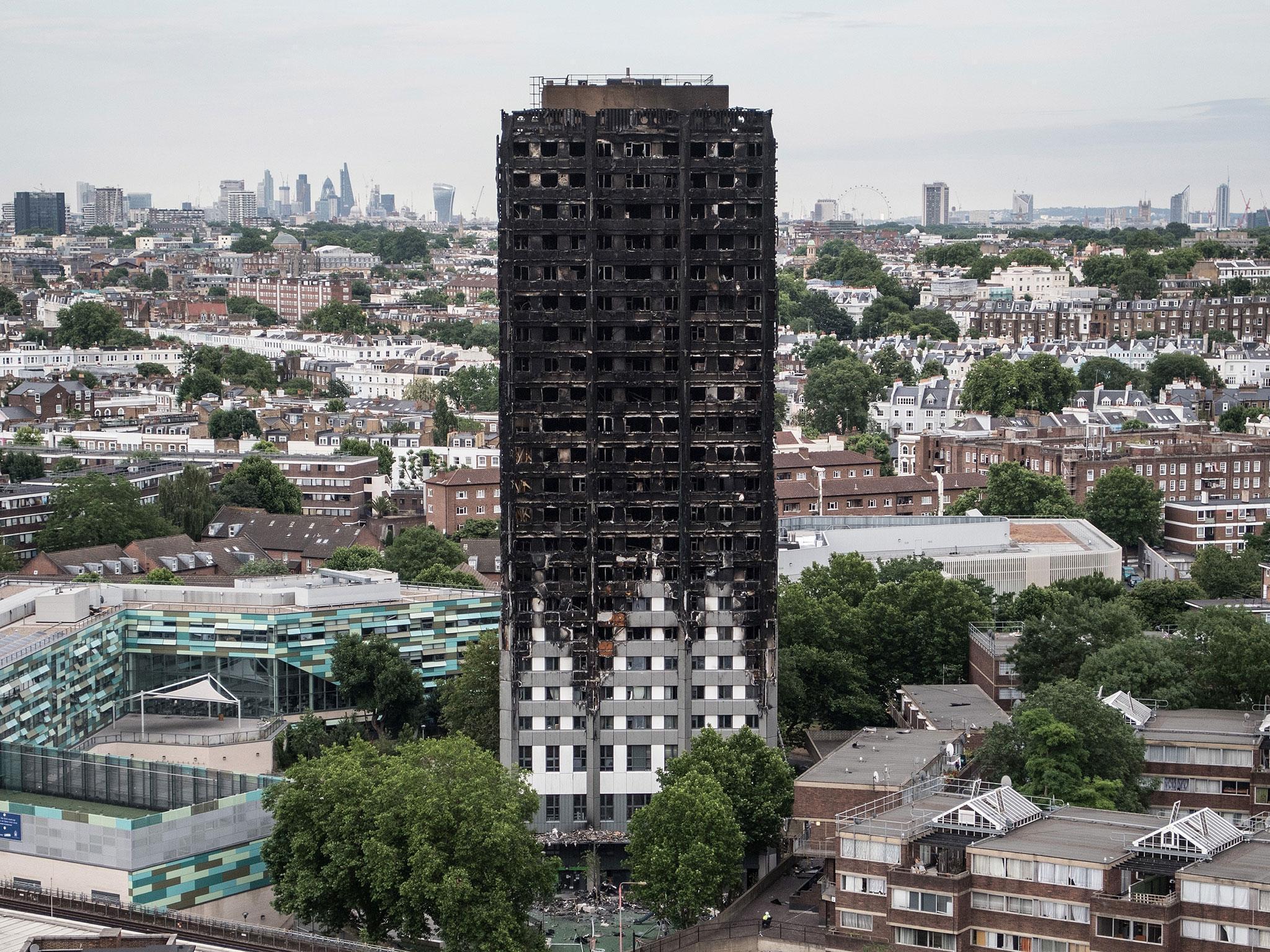Grenfell Tower refurbishment budget was cut because of Government-imposed limits, suggest documents
Kensington and Chelsea Council needed to carry out refurbishments costing £100m - but was only allowed to borrow a fraction of that

Your support helps us to tell the story
From reproductive rights to climate change to Big Tech, The Independent is on the ground when the story is developing. Whether it's investigating the financials of Elon Musk's pro-Trump PAC or producing our latest documentary, 'The A Word', which shines a light on the American women fighting for reproductive rights, we know how important it is to parse out the facts from the messaging.
At such a critical moment in US history, we need reporters on the ground. Your donation allows us to keep sending journalists to speak to both sides of the story.
The Independent is trusted by Americans across the entire political spectrum. And unlike many other quality news outlets, we choose not to lock Americans out of our reporting and analysis with paywalls. We believe quality journalism should be available to everyone, paid for by those who can afford it.
Your support makes all the difference.The renovation of Grenfell Tower was scaled back and costs cut to a minimum because of Government-imposed limits on the amount a council can borrow to spend on housing, new documents suggest.
Records dating from 2014 show the Royal Borough of Kensington and Chelsea, where the 24-storey tower is located, was under pressure to cut spending on building maintenance because of the cap on debt in a council’s housing revenue account – the budget it has for building new homes and maintaining existing ones.
It has previously been revealed that cost-cutting measures resulted in a cheaper but more flammable exterior cladding being installed on the tower in order to save £293,000 on the total £9.2m refurbishment.
The renovation, which was completed in 2016, also did not include the installation of key safety features such as sprinklers and additional fire escapes, despite residents having requested them.
As the Government has slashed the grants it gives to local authorities, many councils have asked for more powers to borrow money to build and maintain homes. Ministers, however, have consistently refused to grant them.
The cap was imposed by the Coalition Government in 2012 in the midst of austerity and attempts to cut borrowing in the public sector. In return, councils were allowed to keep most of the revenues they make from rents.
However, councils and their representative body, the Local Government Association, say the limits are “unnecessary” and restrict their ability to fund new homes and maintain existing ones.
The current Government has hinted it is willing to relax the borrowing restrictions in some cases.
The documents, uncovered by Inside Housing, reveal Kensington and Chelsea’s attempts to cut spending on maintenance in order to meet the criteria on borrowing.
The council’s Housing Revenue Account (HRA) business plan for 2014 shows it was allowed to borrow just £11.4m – a fraction of the £100m needed to carry out necessary refurbishment on its properties, including Grenfell Tower.
“Despite the aim of HRA’s becoming self-financing, local authorities have been set a borrowing cap for their HRA which cannot be exceeded,” the report says.
“The Royal Borough’s cap is £221m – given our current debt, our headroom for borrowing is only £11.4m... Given, the limited scope for additional borrowing, the intention is to not use it to fund maintenance work.
“The estimated cost over the next five years to deliver the agreed investment standard is approximately £100m. There currently remains a funding gap of at least £30m.”
Two contractors refused to carry out the work on Grenfell within the proposed budget, leading Kensington and Chelsea to seek a company that was willing to do the job more cheaply.
It eventually appointed Rydon, which is said to be part of police investigations into the Grenfell disaster, in which at least 80 people died. The company says its work on the building met all relevant building regulations.
Without being able to borrow more money to maintain council houses, Kensington and Chelsea, like other councils, was forced to sell some of the properties it owned to generate funds.
However, it also made the decision to minimise costs on the Grenfell refurbishment by installing the more flammable Reynobond PE cladding panel, which has since been the subject of Government testing.
More than 100 building that use that panel or a similar model have failed the latest round of safety tests. Reynobond has now stopped selling the product for use on high-rise tower blocks.
The Independent has contacted the Department for Communities and Local Government for comment.
Join our commenting forum
Join thought-provoking conversations, follow other Independent readers and see their replies
Comments